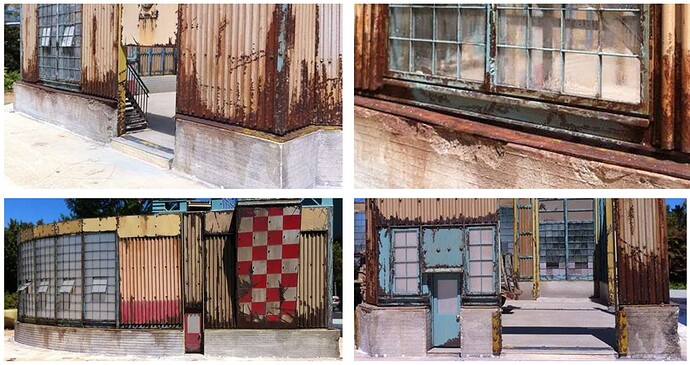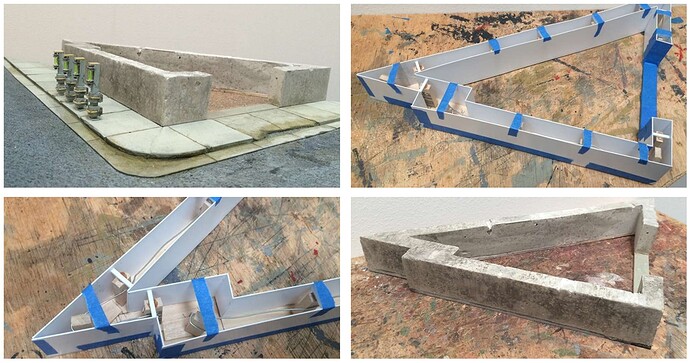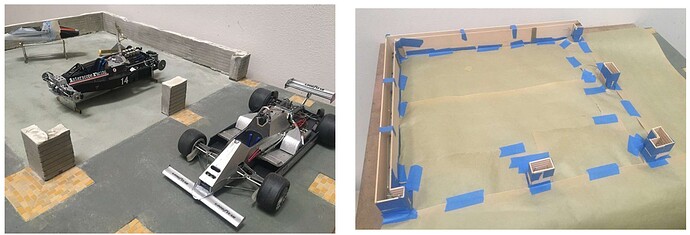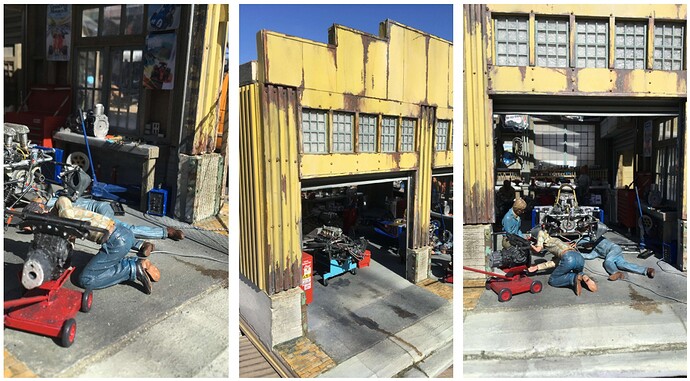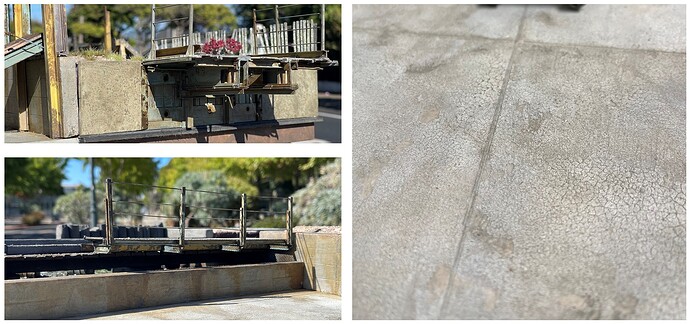Hi Fred,
I recently pulled together some images for a friend who was struggling a bit using hydrocal (a product like plaster, but very hard, smooth and a bit porous) for model building. I have never used pigment to color concrete (not n models, but in real concrete, yes), but I imagine someone could do so, assuming it could be applied evenly over long distances/large surfaces.
Instead, I have used three primary methods for making scale concrete:
-
Using hydrocal with no color integration
-
Using hydrocal with Vallejo Model Air Cement color integrated
-
Using other materials made/treated/stained to look like concrete.
Below are some examples of each:
This was built using straight hydrocal, then stained with a mix of India ink in Isopropyl Alcohol. I think this is my preferred choice, but it is important to be sure that your Ink/ISO mix is highly diluted, otherwise, it will go on as black stain!
As the hydrocal is porous, you can apply (I use a little spritz bottle - the kind you pump with your finger) the wash over. I prefer this because the hydrocal remains porous and you can add other washes over it to get more decrepitude should you wish, like the rust and grime shown above.
This is another example of the same method:
You can see the mottled effect you can get by spritzing the stain on, so it looks like concrete. The sidewalk in the foreground is basswood with light blue grey paint applied directly, not as a wash, but with and ISO wash over it.
In the following example I integrated a few shots of Vallejo Model Air Cement paint into the wet hydrocal. This works pretty well, and the color is distributed evenly. But doing this, the acrylic paint apparently fills/eliminates the porous final surface, which is ok, unless you want to add other coats of washes, which don’t seem to take as well:
I also included this example because of the adjacent asphalt drive and concrete slab located within the foundation, both of which are painted cork mat. I’ve found painting the cork mat can be a bit tricky, and advise using an airbrush and applying multiple thin layers.
The concrete color is Vallejo Model Air light blue grey, with several Ink/ISO washes applied. The Asphalt is Vallejo Model Air Anthracite grey, also applied in thin layers, then treated with a highly diluted wash of LifeColor Dust I and when it’s done:
The sidewalk is pink rigid insulating foam, topped with a thin but complete layer of lightweight spackle - lightweight is key here - as its like cream cheese whip, and goes down very thin, painted as noted above. In this case, you can see the concrete looks as it did when it set up, as it doesn’t seem to take light washes very well.
Finally, some images of various wood materials made to look like concrete:
Starting with the slab on the right, which is a plywood base, with an overall layer of Fine Pumice gel, and selective thin applications of crackle paste. I carved the expansion joint in once the base materials were hard.
It’s then colored with washes of light blue grey, followed by washes of dark grey blue - the trick with the color is to ensure they are washes and not painted on, like you would on other objects. To do this I sprayed some wet water (Golden makes Wetting Aid, which is apparently commonly used by artist) to big areas, then dropped paint right out of the bottle over, then brush/swirl around with a relatively firm wide brush.
The two pictures on the left are bass wood boards and sheets - same approach as above, but they did not get any crackle paste, and instead only fine pumice gel. They were then stained with layers of Vallejo light blue grey, and then Vallejo cement. These were supposed to look like very old, weathered concrete so the washes were intentionally mottled - so lots of dabbing and swirling with the brush.
While Hydrocal can provide great results, it can be a handful to work with - imagine a bucket full of pancake batter - being poured into scale molds - and like pouring real concrete you need to vibrate it along the way to clear out air pockets. I find it to be a messy PITA, but if the concrete is focal, well it looks very good. If though you need a lot of concrete that is not a primary design element, the cork or basswood provide a good option.
OK, sorry about such a rambling reply! But I had the info right here 
So, good luck to Rich and his build!
Cheers
Nick 


